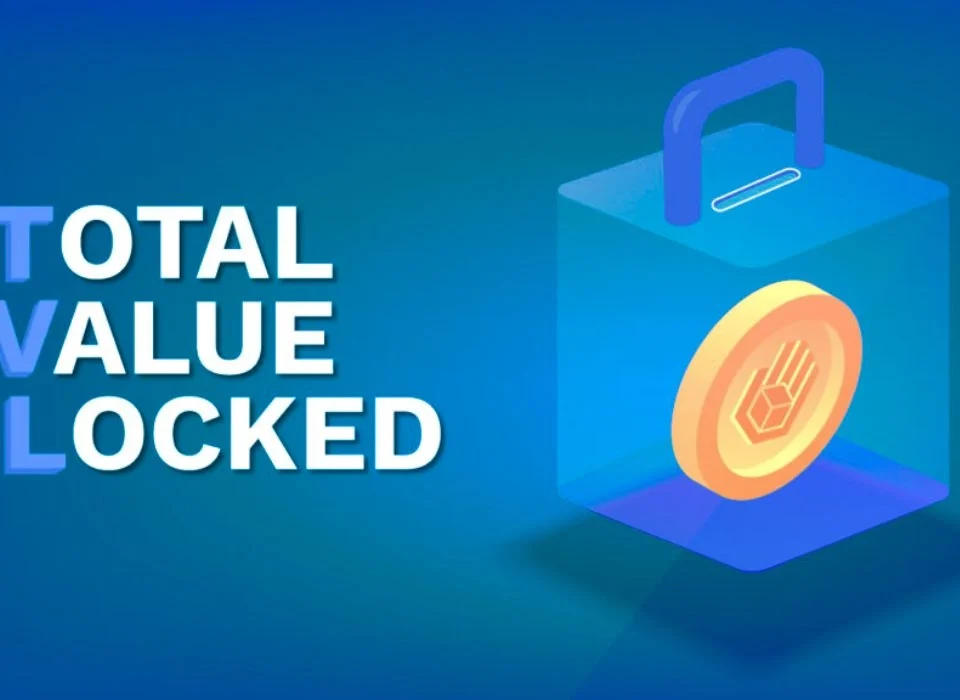
The Risks and Rewards of Leveraged Crypto Trading
02/09/2024
How to Use DeFi Aggregators
21/09/2024The Future of Cross-Border Payments with Cryptocurrency
Cross-border payments have traditionally been associated with high fees, lengthy processing times, and complex regulatory requirements. However, the rise of cryptocurrency offers a solution to these challenges by providing faster, cheaper, and more transparent ways to transfer money across borders. In this article, we will explore the future of cross-border payments with cryptocurrency, how it can revolutionize the industry, and the potential challenges and opportunities that lie ahead.

Current Challenges in Cross-Border Payments
High Fees
Traditional cross-border payment systems, such as banks and money transfer services, often charge high fees. These fees can include service charges, foreign exchange fees, and intermediary bank fees. As a result, remittance costs can be prohibitive for individuals and businesses, especially when transferring small amounts.
Slow Transaction Times
Cross-border payments through traditional financial institutions can take several days to process. This delay is due to the involvement of multiple intermediaries, such as correspondent banks, and the complexity of international banking networks.
Lack of Transparency
The current system for cross-border payments lacks transparency. Senders and recipients often have little visibility into where their money is at any given point, how long the transfer will take, or the total cost involved due to hidden fees.
Complex Compliance and Regulation
Cross-border payments must comply with various regulations, such as anti-money laundering (AML) and know-your-customer (KYC) laws. These regulatory requirements add complexity and can delay transactions, especially in regions with strict financial regulations.
The Role of Cryptocurrency in Cross-Border Payments
Lower Fees
Cryptocurrencies can significantly reduce the cost of cross-border payments. Transactions conducted through blockchain technology do not require intermediaries such as banks or payment processors, eliminating many of the fees associated with traditional methods. For example, Bitcoin and other cryptocurrencies can transfer value across borders with minimal transaction fees, regardless of the amount being transferred.
Faster Transactions
Blockchain technology enables near-instantaneous cross-border payments. Unlike traditional systems, where transfers can take several days, cryptocurrency transactions can be completed in minutes, making it a more efficient option for international payments.
Greater Transparency
Cryptocurrency transactions are recorded on a public blockchain, providing complete transparency throughout the transfer process. Both the sender and recipient can track the transaction in real time, knowing exactly where their money is and when it will be delivered.
Decentralization and Security
Cryptocurrencies operate on decentralized networks, meaning they are not controlled by a single entity, such as a bank or government. This reduces the risk of interference, fraud, or manipulation in the payment process. Additionally, blockchain technology provides robust security, protecting cross-border transactions from hacking or tampering.
Financial Inclusion
Cryptocurrencies can also promote financial inclusion by providing access to financial services for individuals in regions with limited banking infrastructure. In developing countries, where traditional banking services may be unavailable or unreliable, cryptocurrencies can provide a reliable means of sending and receiving payments internationally.
Examples of Cryptocurrencies for Cross-Border Payments
Bitcoin (BTC)
Bitcoin was the first cryptocurrency and remains the most widely recognized and accepted digital currency for cross-border payments. Its decentralized nature and secure blockchain make it a popular choice for international money transfers. However, Bitcoin’s scalability issues and relatively high transaction fees during periods of network congestion can limit its efficiency for smaller payments.
Ripple (XRP)
Ripple’s XRP is specifically designed for cross-border payments and aims to bridge the gap between traditional financial institutions and blockchain technology. Ripple’s payment network enables fast and cost-effective transfers between banks and financial institutions, using XRP as a bridge currency. Ripple’s partnerships with major financial institutions make it a leading contender in the cross-border payment space.
Stellar (XLM)
Stellar is another blockchain platform designed for fast and affordable cross-border payments. Its native cryptocurrency, Lumens (XLM), facilitates transactions between different fiat currencies. Stellar focuses on financial inclusion and has partnered with organizations and financial institutions to enable low-cost cross-border payments in regions with underdeveloped banking systems.
Litecoin (LTC)
Litecoin offers faster transaction times and lower fees compared to Bitcoin, making it a more efficient option for cross-border payments. Litecoin’s focus on speed and cost-efficiency has made it popular for peer-to-peer transactions, including international money transfers.
Stablecoins
Stablecoins, such as Tether (USDT), USD Coin (USDC), and DAI, are cryptocurrencies that are pegged to the value of a fiat currency, such as the U.S. dollar. Stablecoins offer the benefits of blockchain technology—speed, transparency, and low fees—while avoiding the price volatility typically associated with other cryptocurrencies. This makes stablecoins an ideal solution for cross-border payments, particularly for businesses and individuals who require stability.
Opportunities for Cross-Border Payments with Cryptocurrency
Remittances
Remittances—money transfers sent by migrants to their home countries—are a key use case for cryptocurrency in cross-border payments. According to the World Bank, global remittances exceeded $700 billion in 2020. Cryptocurrencies can provide a faster, cheaper, and more transparent alternative to traditional remittance services, which often charge high fees and take days to process.
B2B Payments
Cryptocurrencies are increasingly being used for business-to-business (B2B) payments in global trade. Businesses can benefit from lower fees, faster transactions, and increased transparency when settling cross-border invoices using digital currencies. This is particularly useful for small and medium-sized enterprises (SMEs) that may face high costs and delays with traditional banking systems.
E-Commerce and Online Marketplaces
Cryptocurrency is becoming a popular payment method for cross-border transactions in e-commerce and online marketplaces. Merchants can accept cryptocurrency payments from international customers without worrying about currency conversion fees or delays in receiving funds. Blockchain technology also provides enhanced security, reducing the risk of fraud in online transactions.
Humanitarian Aid and Donations
Cryptocurrencies can play a vital role in delivering humanitarian aid and donations to regions affected by conflict or natural disasters. Traditional financial systems may be slow or unavailable in such areas, but cryptocurrency can provide a fast and secure means of transferring funds to those in need.
Challenges and Risks
Volatility
One of the biggest challenges of using cryptocurrencies for cross-border payments is the price volatility of most digital currencies. Bitcoin and other cryptocurrencies can experience significant fluctuations in value within short periods, which can pose risks for both senders and recipients. This volatility can be mitigated by using stablecoins, which are designed to maintain a stable value.
Regulatory Uncertainty
Cryptocurrency regulations vary significantly between countries, and the legal status of digital currencies is still evolving. In some countries, cryptocurrency is restricted or banned, while in others, it is encouraged and regulated. Regulatory uncertainty can create challenges for businesses and individuals using cryptocurrency for cross-border payments, as compliance with local laws may be difficult.
Scalability
While blockchain technology offers many advantages, scalability remains an issue for some networks. For example, during periods of high demand, the Bitcoin network can become congested, leading to slower transaction times and higher fees. Developing solutions such as Layer 2 technologies, like the Lightning Network, aim to address these issues and improve the scalability of blockchain-based payment systems.
Security Risks
While blockchain technology is secure, cryptocurrencies are not immune to security risks such as hacking, fraud, and theft. Ensuring the safety of cryptocurrency wallets and exchanges is essential for maintaining the security of cross-border payments.
The Future of Cross-Border Payments with Cryptocurrency
Mainstream Adoption
As cryptocurrencies continue to gain acceptance, more financial institutions, businesses, and governments are likely to adopt them for cross-border payments. Mainstream adoption will depend on the development of regulatory frameworks, technological advancements, and the creation of user-friendly platforms that make it easy for individuals and businesses to use cryptocurrencies.
Technological Advancements
Technological advancements in blockchain scalability, privacy, and security will play a crucial role in shaping the future of cross-border payments with cryptocurrency. Layer 2 solutions, such as the Lightning Network, and improved consensus mechanisms, like Proof of Stake (PoS), will help overcome existing challenges and make cryptocurrency a more viable option for international payments.
Central Bank Digital Currencies (CBDCs)
The development of central bank digital currencies (CBDCs) could also have a significant impact on cross-border payments. CBDCs are digital currencies issued by central banks and backed by a government’s fiat currency. While CBDCs are not decentralized like cryptocurrencies, they could provide a faster and more efficient alternative to traditional cross-border payment systems.
Global Financial Inclusion
Cryptocurrencies have the potential to increase financial inclusion by providing access to banking and payment services for individuals in developing countries. As more people gain access to mobile phones and the internet, cryptocurrencies can provide a way for the unbanked population to participate in the global economy.
Conclusion
Cryptocurrencies offer a promising future for cross-border payments, providing faster, cheaper, and more transparent alternatives to traditional financial systems. While challenges such as volatility, regulatory uncertainty, and scalability remain, the potential benefits of cryptocurrency for cross-border payments are undeniable. As the technology continues to evolve and adoption increases, cryptocurrencies could play a significant role in transforming the way we send and receive money across borders.



